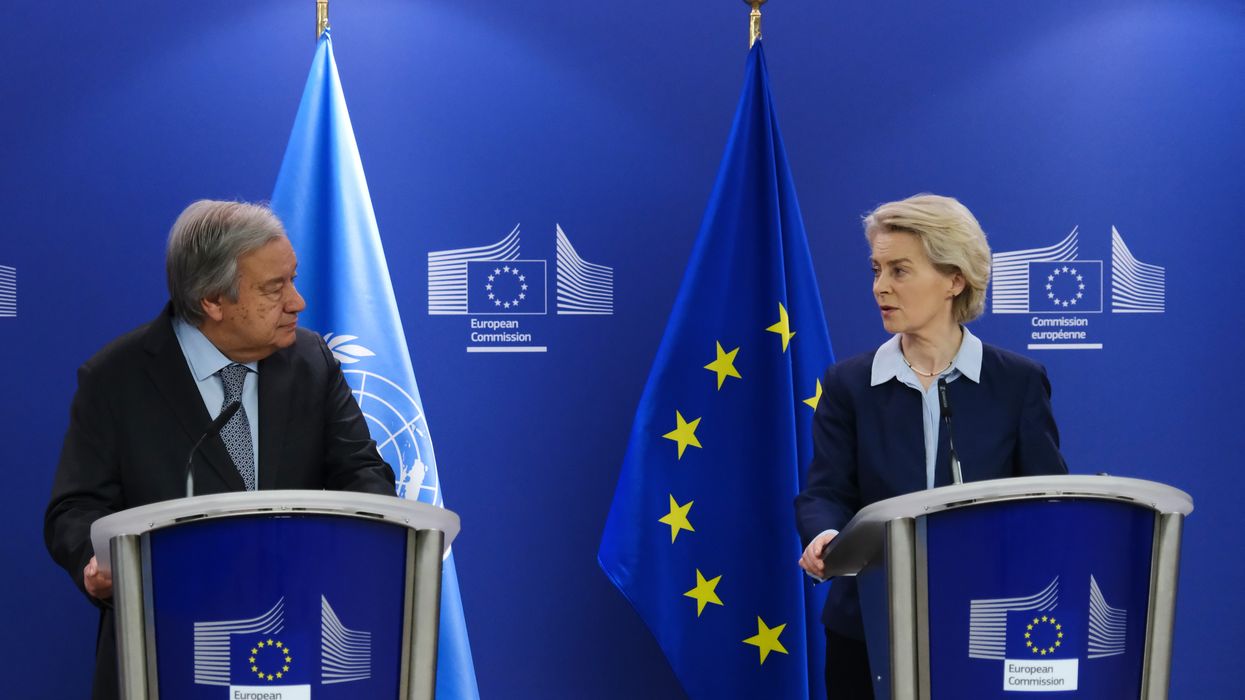A growing proportion of international conflicts in the modern era are brought to a close by diplomatic negotiation — not a decisive military victory. This reality is often denigrated by accusations of “appeasement” that fly in the face of sober calculation.
Maximized gains have become par for the course in discussions of how involved the United States and its allies should be in Ukraine. In much of officially sanctioned discourse, a total Ukrainian victory — including the return of Crimea and the Donbas to Kyiv — is the only way to see the war to an end. This is a more dubious historical proposition than its proponents assume.
The necessity of engaging in diplomacy is often waved away with incredibly suspect comparisons to World War II. The implicit assumption is that the unconditional surrender of the Axis powers is the key lesson for understanding diplomatic history, rather than an outlier event. Most major conflicts, however, do not end like 1945.
Additionally, much of the world sees the Ukraine conflict not as some cosmic battle for the soul of the world, but rather as a localized European war that is part of U.S.-Russia great power rivalry.
According to the European Council on Foreign Relations, the coalition of NATO countries and a few others like Japan is more of an outlier than it presumes. Most countries around the world are pursuing their interests through some combination of staying out of the Ukraine conflict and working to avoid greater escalation. World opinion, to the extent that such a thing exists, is far less skeptical of negotiated peace than the United States and many of its partners seem to be.
Regardless of one’s opinions on the Ukraine War, we should not let hyperbolic and maximalist claims built around a selective and myopic reading of history blind us to the reality of diplomacy’s actual function in both the past and present. For sure, negotiated settlements have not always ended internal conflicts and civil wars, but negotiation tends to be much more effective when it comes to international state-on-state violence.
While maximalists love to use World War II as a lodestar, the postwar era has witnessed an increasing trend towards state-to-state negotiation as a way to end or reduce conflicts. Interconnectivity and the proliferation of nuclear weapons further underscore the folly of pursuing a crushing defeat or unconditional surrender from a competitor nation.
Massive knockout blows become rarer as we approach the present era, since the technological and resource gaps between powers have narrowed. Most exceptions to this have hardly been enviable either, as they tend to come in the form of military operations like those conducted in Iraq and Libya where Western coalitions overwhelmed small countries in a relatively lopsided contest only to see chaos, state failure, and refugee crises ensue in the years since.
The first major conventional conflict after the Second World War was the Korean War. The conflict began with a maximalist goal of Korean unification under Pyongyang, then, once DPRK forces were thrown out of the south in 1950, Washington and Seoul took their own turn in an attempt to reunify the peninsula themselves. The war would continue until 1953 — causing far more casualties on both sides — only to ultimately end along a demilitarized zone barely different in terms of overall territorial control than the 38th Parallel, which had been the border before the war. The armistice that remains in place to this day is a ceasefire, not a peace treaty.
Further compromise settlements would occur during the course of the Cold War. Violent upheaval in Zanzibar threatened a potential international crisis as the new government moved to eject Arabs and turn towards the communist-allied nations. Yet negotiators managed to diffuse the crisis in 1964 by securing international recognition of Zanzibar’s domestic autonomy and merger with Tanganyika, thus creating the United Republic of Tanzania.
In the next decade, it would be the far less militarily decisive 1973 Yom Kippur War that would finally bring about a lasting peace between Israel and its previous arch enemy Egypt. Previous victories had left the neighboring Arab states more unified in opposition, but the ability of diplomats to work together to trade land for recognition ended up leading to a more durable settlement in a process that was greatly facilitated by the United States.
Meanwhile, previously war-torn Southeast Asia eventually reached a far greater — and so far lasting — level of international peace through the normalization of relations that took place between Vietnam, Thailand, and China at the end of the Cold War.
This could be explained away as necessary compromises in an era of nuclear danger and superpower competition, but that only increases their relevance in the present pivot to multipolarity. Additionally, it is worth noting that, in the American-dominated “unipolar moment” of the 1990s and 2000s, the trend of negotiated settlements did not decrease. None of the combatants in the breakup of Yugoslavia, for example, could be said to have won a decisive victory.
Similarly, Ethiopia and Eritrea fought a major war over borders in the Badme region that resulted in what initially looked to be a bitter stalemate but has so far held strong more than 20 years after its conclusion. Today, the two former enemies even cooperate against Tigrayan rebels.
When looking at seemingly intractable conflicts between local actors, be it India and Pakistan, Saudi Arabia and Iran, or Ukraine and Russia, it seems unlikely that the most probable solution will be the total collapse of one side and the triumph of the other. Nor can an internal upset among the powerful elite of a belligerent nation, such as is advocated by a hawkish former secretary of State, be assumed as a definite outcome. Such events have occurred in recent history, but they are outliers and should not be planned for as the most likely scenarios.
Regardless of the rightness or wrongness of any particular cause, most nations should expect a negotiated settlement as the most realistic outcome of any international conflict. It is unwise to allow subjective outliers to blind us to the reality that a majority of the world's interstate wars eventually boil down to diplomats forcing and giving tough concessions at the negotiating table.
The more this outcome is understood as an inevitability, the less obstacles there will be in the way of sober and realistic statecraft.















